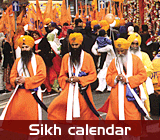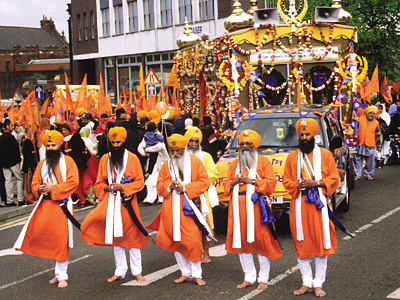 |
 |
|||
  |
 |
|||
Vaisakhi |
|
|
Vaisakhi is the Sikh New Year festival. It occurs on 14th April on the Western Gregorian calendar and is one of the most important festivals in the year. Vaisakhi also celebrates the anniversary of the founding of the Khalsa (the Sikh community), in 1699 CE, by Guru Gobind Singh. The celebration of the Khalsa’s beginning is important as it united Sikhs as a community, bound together by their Gurus and a common faith. Vaisakhi is often celebrated with street parades. These include the whole Sikh community, who sing and chant scriptures and hymns. Historically-costumed ‘panj piare’ lead the parades – the ‘five beloved ones’ who became the first members of the Khalsa. The Guru Granth Sahib is carried in a prominent place in the procession. |
|